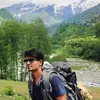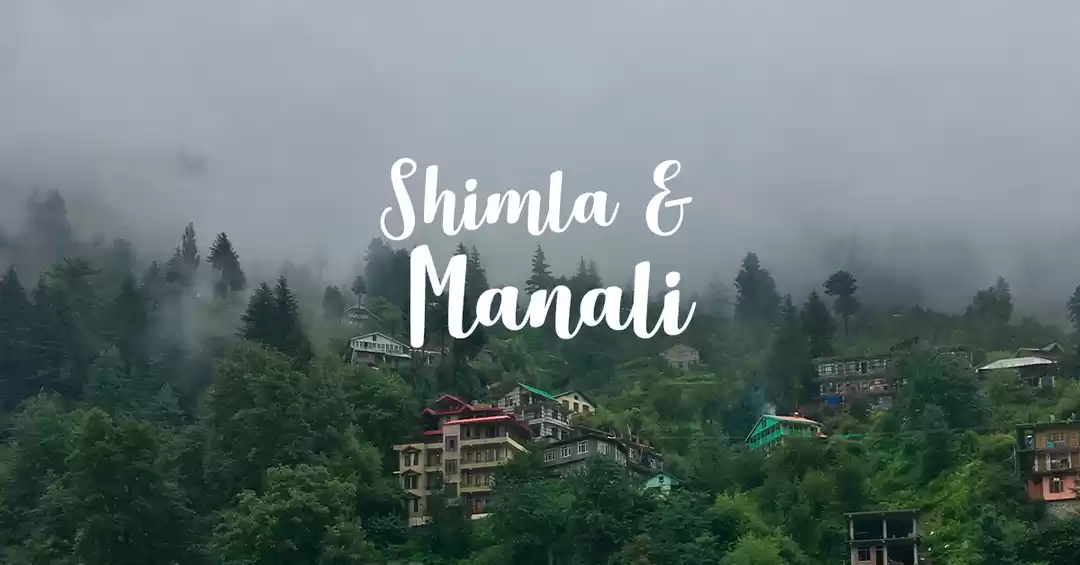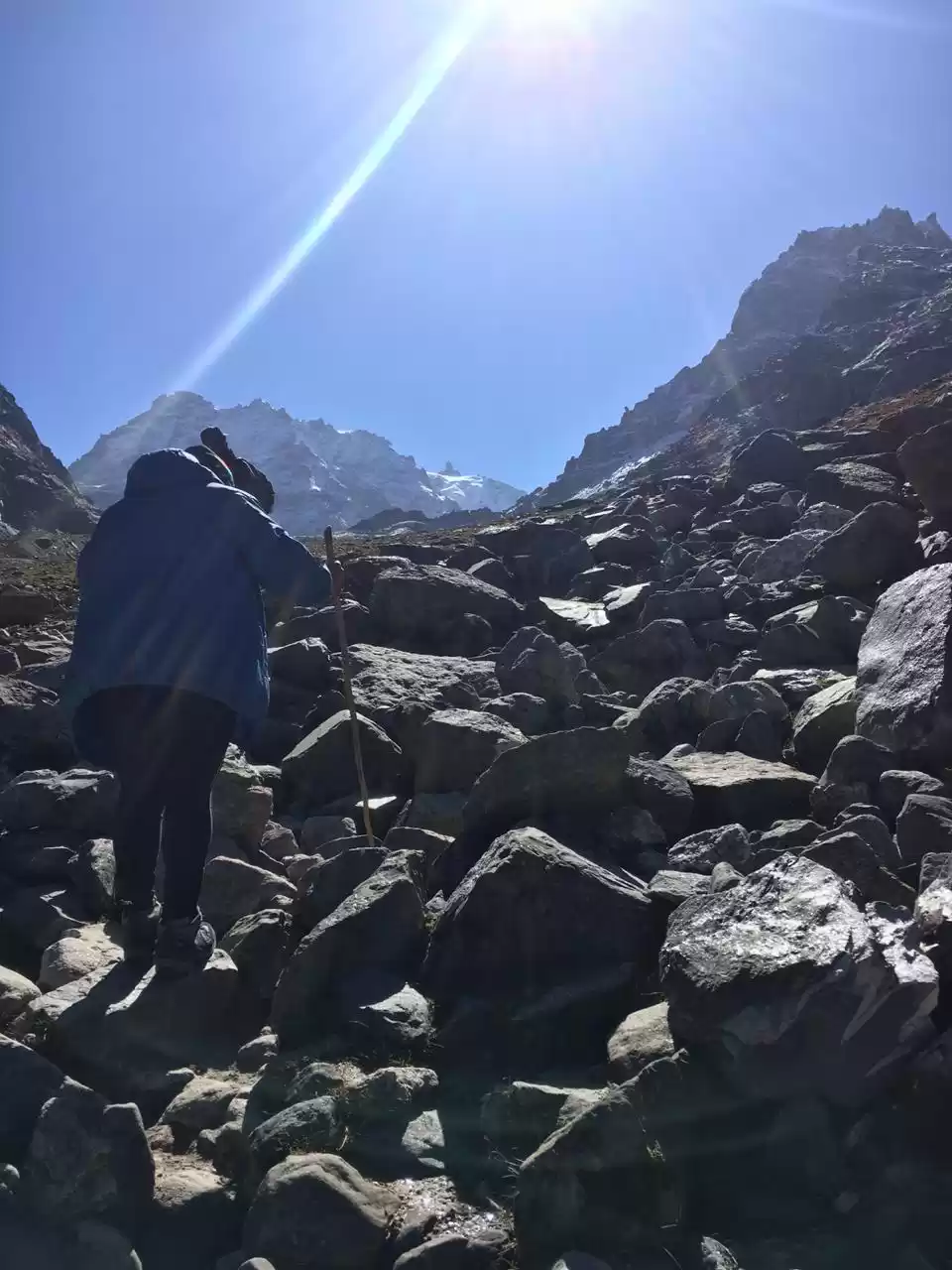
After a few road trips in Himachal last year, I wanted to go for a trek this May. I started working for the plan in April and was trying to get a few friends along. During this time I came across Yhai’s treks- Chanderkhani and Sar Pass. I had almost made my mind for Chanderkhani Pass with Yhai but the number of days was an issue and I couldn't get that many leaves from my job. Yhai trek needed 10 days while I hardly had 5 days.
I went on to read about the Chanderkhani Pass and found that the Yhai route was the longer one and their initial 3 days are to get you ready for the trek and make you comfortable with the weather conditions(acclimatization).
I decided to do it myself with 3 of my friends- Anurag, Aman and Bhushan. We found the itinerary for the 3 day route and started working on it. Anurag was really excited about it, so he read about it everywhere. He was sure that we could do it without any guide but I was still in doubts. After reading a few more blogs, I got further confused and I couldn't decide whether to go for a guide or not. We then checked the weather conditions in Chanderkhani on our planned dates and found that it might rain and there are chances of snowfall as well. I was sure by then that we will need a guide. It was already late and next day we were reaching Kullu. After spending almost all my time at the Pune and Delhi airport (5 hours, waiting for Bhushan to come from Nagpur) calling some 15-20 contacts, I found two tour organizers ready to provide us with guides along with a helper to cook and carry stuff like stove, food and utensils. We finalized one of them and left from Delhi for Kullu in an overnight bus.
We reached Kullu on 8th Morning, finished our breakfast and called our guide, Ramesh. He told us to come to Dobhi, a small village along the river Beas on Kullu-Manali road. We talked about the trek route, the challenges we might face and other important things. He was shocked that it was the first proper trek for all of us. He told us that we might need one more helper during the trek to carry Sleeping mats, stove, food and utensils. Also, since we were having almost 10-12 Kg of luggage, he said that one or two of us might find it difficult to carry it on the final day. We agreed and told him to get one more helper.
We then left for Patlikuhal (a nearby market) in a local HRTC bus and bought food from there. The items included Rice, Pulses, Maggi, Spices, Snickers, Glucose Powder, Tea and Milk powder. All this while the feeling that we will be starting our trek soon was slowly sinking in and all 4 of us were loving it. That is the excitement level when you go for your first self-planned trek! :D We had our lunch at a local Chinese dhaba and ate Momos and Thukpa (Bhushan was really fascinated with this name).

At around 2.30 pm we hired a Safari from Patlikuhal and left for Rumsu and he charged us Rs 600. Buses only go till Naggar and from there you either have to hike to Rumsu or get a taxi. Considering the route from Naggar to Rumsu was really damaged and messed up, 600 Rs was fair deal. We distributed the food items in everyone’s bags evenly, packed our bags finally before starting to walk. We had to first assemble near a temple in Rumsu which required us to climb 60-70 odd stairs which normally you won’t even give a thought about but with a load of 10-12 Kgs on our back, it gave us some idea of what was coming ahead of us. At the temple, the guide offered his prayers and ‘dhoop’ to the almighty. He told me that he does it every time he starts a trek. I don’t know why but that gave me some feeling of security and protection too. He shouted -“Bolo har har Mahadev”, which we repeated with enthusiasm and the trek started.
The first part of the trek was through dense forests. For the initial half an hour or so, all of us found it a little difficult to walk. With 12 Kg bags on our backs and steep slopes we weren’t really appearing to be positive about the walk ahead. But as our blood grew hotter, we slowly started getting used to the weight and the walk. We found a leaked pipe of water supply somewhere on our way, drank chilled water and refilled our bottles before continuing further. There were different paths at few junctions and one of the guides was showing us the way. After some more altitude gain, the Beas valley could be seen. We took a halt at a plane area surrounded by small peaks. There was a tea point there and locals were also there with their cattle. We relaxed for 20 minutes, had snickers and started walking again. Since it was getting dark, Ramesh suggested us to not to move to Naya Tapru that day and camp at a place, half an hour before it. We walked through more dense forests, saw small falls and water streams on our way before reaching the camp site.


The first part of the trek was through dense forests. For the initial half an hour or so, all of us found it a little difficult to walk. With 12 Kg bags on our backs and steep slopes we weren’t really appearing to be positive about the walk ahead. But as our blood grew hotter, we slowly started getting used to the weight and the walk. We found a leaked pipe of water supply somewhere on our way, drank chilled water and refilled our bottles before continuing further. There were different paths at few junctions and one of the guides was showing us the way. After some more altitude gain, the Beas valley could be seen. We took a halt at a plane area surrounded by small peaks. There was a tea point there and locals were also there with their cattle. We relaxed for 20 minutes, had snickers and started walking again. Since it was getting dark, Ramesh suggested us to not to move to Naya Tapru that day and camp at a place, half an hour before it. We walked through more dense forests, saw small falls and water streams on our way before reaching the campsite.


It was around 5.30 in the evening and the camp site was at a beautiful location. With the peaks in front of us to be trekked the next day, behind us was the amazing view of Dhauladhar Range. The snowcapped mountains were standing tall and we couldn’t have had a more peaceful and beautiful place to put up our tents, take a few pictures and end the day’s trek. While we were busy pitching our tents (both Quechua, T2 and T2 XL, very easy to setup) the guide and helpers were busy burning the stove using the kerosene oil we had bought from Patlikuhal market. There was some problem with the stove and even after trying for next 1 and a half hour, it wasn’t working or as aptly described by our guide the stove was suffering from ‘altitude syndrome’. We then decided to make a ‘Chulah’ using stones and dry wood sticks around us. And when we couldn’t find dry sticks, we picked a few from one of the neighbor’s tent.


While the helpers were cooking Rice and Dal, we sat around the Chulah for some time pretending to help and that eventually became our bonfire for the day. It was taking long to cook as it was on Chulah, so the four of us decided to sit inside the camp for a while. It was then we realized that we must have at least got a pack of UNO cards. But anyway, it was fun talking about random stuff, about the day’s trek and our expectations from next day. The guide called us once the food was ready and trust me, the ‘Dal-Chawal’ we ate there, under the stars and right outside our tent near a bonfire cum Chulah were the best Dal-Chawal ever. Yes, it weren’t the tastiest ever but, the best ever!
It was already 10 Pm by then and it started getting a little cold. We went to our respective tents to sleep and called it a night at 8000ft thinking about the next day’s walk, still a day away from the snow, the Chanderkhani pass.


It was around 5.30 in the evening and the camp site was at a beautiful location. With the peaks in front of us to be trekked the next day, behind us was the amazing view of Dhauladhar Range. The snowcapped mountains were standing tall and we couldn’t have had a more peaceful and beautiful place to put up our tents, take a few pictures and end the day’s trek. While we were busy pitching our tents (both Quechua, T2 and T2 XL, very easy to setup) the guide and helpers were busy burning the stove using the kerosene oil we had bought from Patlikuhal market. There was some problem with the stove and even after trying for next 1 and a half hour, it wasn’t working or as aptly described by our guide the stove was suffering from ‘altitude syndrome’. We then decided to make a ‘Chulah’ using stones and dry wood sticks around us. And when we couldn’t find dry sticks, we picked a few from one of the neighbors’ tent. : P
While the helpers were cooking Rice and Dal, we sat around the Chulah for some time pretending to help and that eventually became our bonfire for the day. It was taking long to cook as it was on Chulah, so the four of us decided to sit inside the camp for a while. It was then we realized that we must have at least got a pack of UNO cards. But anyway, it was fun talking about random stuff, about the day’s trek and our expectations from next day. The guide called us once the food was ready and trust me, the ‘Dal-Chawal’ we ate there, under the stars and right outside our tent near a bonfire cum Chulah were the best Dal-Chawal ever. Yes, it weren’t the tastiest ever but, the best ever!
It was already 10 Pm by then and it started getting a little cold. We went to our respective tents to sleep and called it a night at 8000ft thinking about the next day’s walk, still a day away from the snow, the Chanderkhani pass.
Next day was quite easy for us as we got used to the weight of the bags and the slopes weren’t that steep. We crossed Naya Tapru and reached right below the Chanderkhani pass on Day 2.
Continue reading Part 2 of this trip..
Click here to watch a 20 sec short video that I shot at Chanderkhani Pass.
























